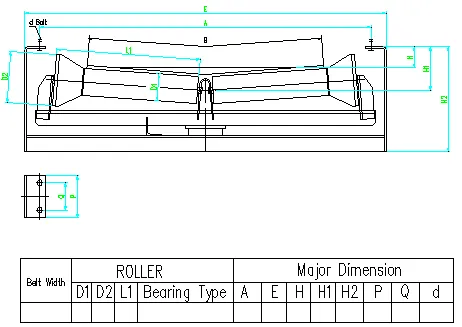 Afrikaans
Afrikaans  Albanian
Albanian  Amharic
Amharic  Arabic
Arabic  Armenian
Armenian  Azerbaijani
Azerbaijani  Basque
Basque  Belarusian
Belarusian  Bengali
Bengali  Bosnian
Bosnian  Bulgarian
Bulgarian  Catalan
Catalan  Cebuano
Cebuano  Corsican
Corsican  Croatian
Croatian  Czech
Czech  Danish
Danish  Dutch
Dutch  English
English  Esperanto
Esperanto  Estonian
Estonian  Finnish
Finnish  French
French  Frisian
Frisian  Galician
Galician  Georgian
Georgian  German
German  Greek
Greek  Gujarati
Gujarati  Haitian Creole
Haitian Creole  hausa
hausa  hawaiian
hawaiian  Hebrew
Hebrew  Hindi
Hindi  Miao
Miao  Hungarian
Hungarian  Icelandic
Icelandic  igbo
igbo  Indonesian
Indonesian  irish
irish  Italian
Italian  Japanese
Japanese  Javanese
Javanese  Kannada
Kannada  kazakh
kazakh  Khmer
Khmer  Rwandese
Rwandese  Korean
Korean  Kurdish
Kurdish  Kyrgyz
Kyrgyz  Lao
Lao  Latin
Latin  Latvian
Latvian  Lithuanian
Lithuanian  Luxembourgish
Luxembourgish  Macedonian
Macedonian  Malgashi
Malgashi  Malay
Malay  Malayalam
Malayalam  Maltese
Maltese  Maori
Maori  Marathi
Marathi  Mongolian
Mongolian  Myanmar
Myanmar  Nepali
Nepali  Norwegian
Norwegian  Norwegian
Norwegian  Occitan
Occitan  Pashto
Pashto  Persian
Persian  Polish
Polish  Portuguese
Portuguese  Punjabi
Punjabi  Romanian
Romanian  Russian
Russian  Samoan
Samoan  Scottish Gaelic
Scottish Gaelic  Serbian
Serbian  Sesotho
Sesotho  Shona
Shona  Sindhi
Sindhi  Sinhala
Sinhala  Slovak
Slovak  Slovenian
Slovenian  Somali
Somali  Spanish
Spanish  Sundanese
Sundanese  Swahili
Swahili  Swedish
Swedish  Tagalog
Tagalog  Tajik
Tajik  Tamil
Tamil  Tatar
Tatar  Telugu
Telugu  Thai
Thai  Turkish
Turkish  Turkmen
Turkmen  Ukrainian
Ukrainian  Urdu
Urdu  Uighur
Uighur  Uzbek
Uzbek  Vietnamese
Vietnamese  Welsh
Welsh  Bantu
Bantu  Yiddish
Yiddish  Yoruba
Yoruba  Zulu
Zulu head pulley in conveyor
Understanding Head Pulley in Conveyor Systems
In the realm of material handling and transportation, conveyor systems have become an indispensable part of various industries, from manufacturing to logistics. One of the essential components of a conveyor system is the head pulley. This element plays a crucial role in the operation and efficiency of conveyor systems by facilitating the movement of materials over a set path.
What is a Head Pulley?
A head pulley is located at the discharge end of a conveyor belt system. It serves several primary functions it drives the conveyor belt, provides tension to maintain the proper alignment of the belt, and facilitates the discharge of materials. Generally, head pulleys are designed to be robust and durable, able to withstand the demands of transporting heavy loads over extended periods.
Functionality and Importance
The functionality of the head pulley can be broken down into several key processes
1. Driving Mechanism The head pulley is typically connected to a motor, which provides the necessary torque to move the conveyor belt. As the motor spins the head pulley, it effectively pulls the belt forward, allowing materials to be transported along the conveyor system.
2. Tension Maintenance Proper tension is crucial for maintaining the alignment and integrity of the conveyor belt. The head pulley helps in exerting the right amount of tension to prevent slippage, which could lead to inefficiencies or mechanical failures. A well-tensioned belt minimizes wear and tear, prolonging the lifespan of both the belt and the entire conveyor system.
3. Material Discharge At the end of the conveyor where the head pulley is located, materials are typically discharged. The design of the head pulley can influence the manner in which materials are released. Some head pulleys are designed to facilitate a gradual release, while others may feature specialized configurations to ensure efficient and clean discharge of materials.
head pulley in conveyor

Types of Head Pulleys
Head pulleys can come in various types based on their construction and purpose
- Drive Pulleys These are the most common type of head pulleys, primarily focused on powering the conveyor belt. They are often grooved to facilitate better grip on the belt.
- Tail Pulleys Although often discussed in conjunction with head pulleys, tail pulleys are located at the opposite end of the conveyor belt system. They help return the belt and are crucial in maintaining tension.
- Take-up Pulleys These are designed to adjust the tension of the conveyor belt. They can be integrated into the head pulley assembly to provide additional tensioning capabilities.
Maintenance and Longevity
Regular maintenance of the head pulley is necessary to ensure optimal performance. This includes checking for signs of wear and tear, ensuring proper alignment, and lubricating bearings to prevent friction-related issues. Neglecting maintenance can lead to increased operational costs, as the efficiency of the conveyor system may decrease over time due to mechanical failures or material blockages.
Conclusion
In summary, the head pulley is an integral component of conveyor systems, driving performance, maintaining tension, and facilitating material discharge. Understanding its function and maintaining it properly can significantly enhance the efficiency and longevity of conveyor operations. As industries continue to evolve and demand more efficient material handling solutions, the importance of reliable components like the head pulley cannot be overstated. Investing in quality head pulleys and regular maintenance can lead to smoother operations and increased productivity in various applications.
-
Revolutionizing Conveyor Reliability with Advanced Rubber Lagging PulleysNewsJul.22,2025
-
Powering Precision and Durability with Expert Manufacturers of Conveyor ComponentsNewsJul.22,2025
-
Optimizing Conveyor Systems with Advanced Conveyor AccessoriesNewsJul.22,2025
-
Maximize Conveyor Efficiency with Quality Conveyor Idler PulleysNewsJul.22,2025
-
Future-Proof Your Conveyor System with High-Performance Polyurethane RollerNewsJul.22,2025
-
Driving Efficiency Forward with Quality Idlers and RollersNewsJul.22,2025





























